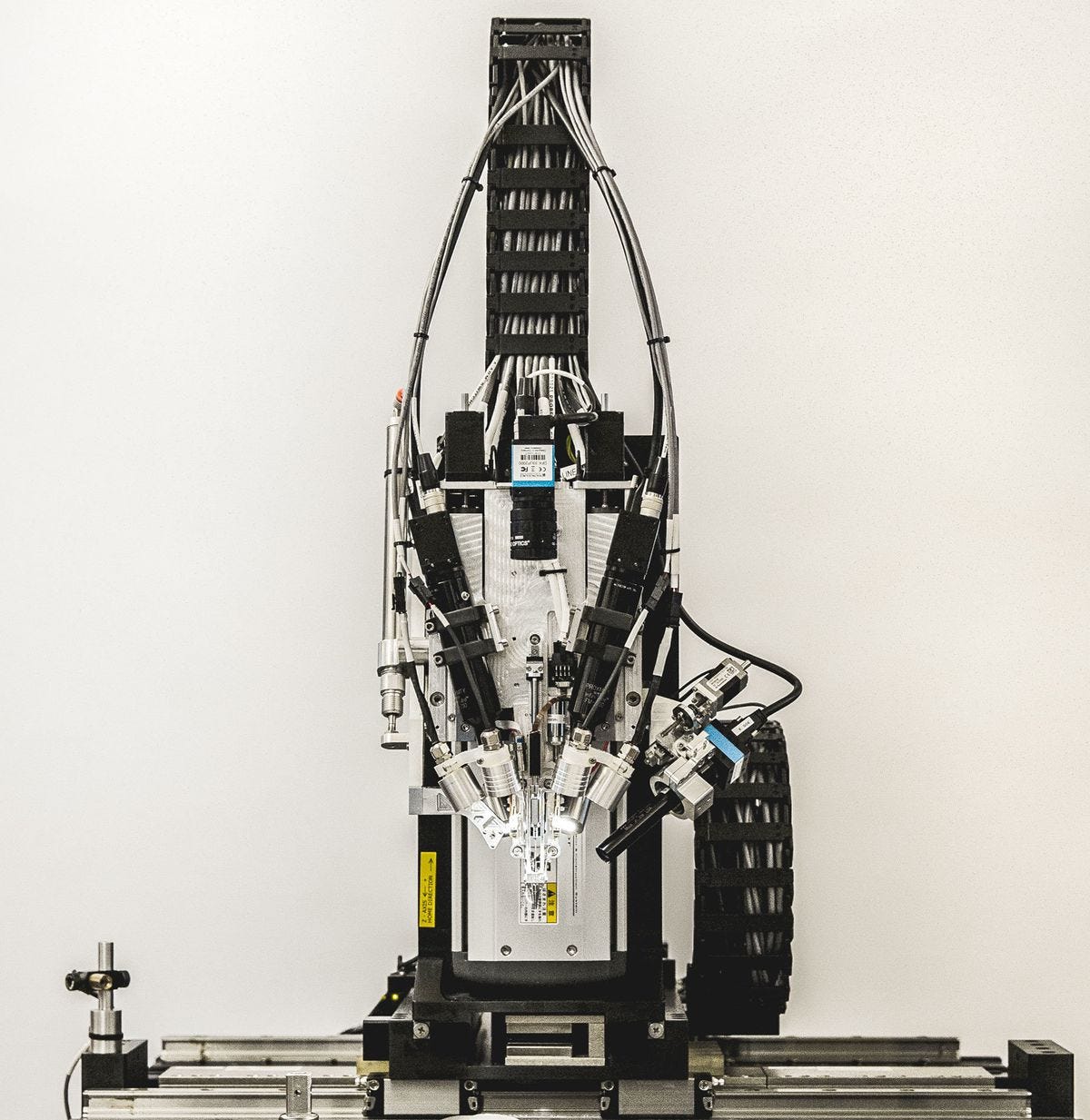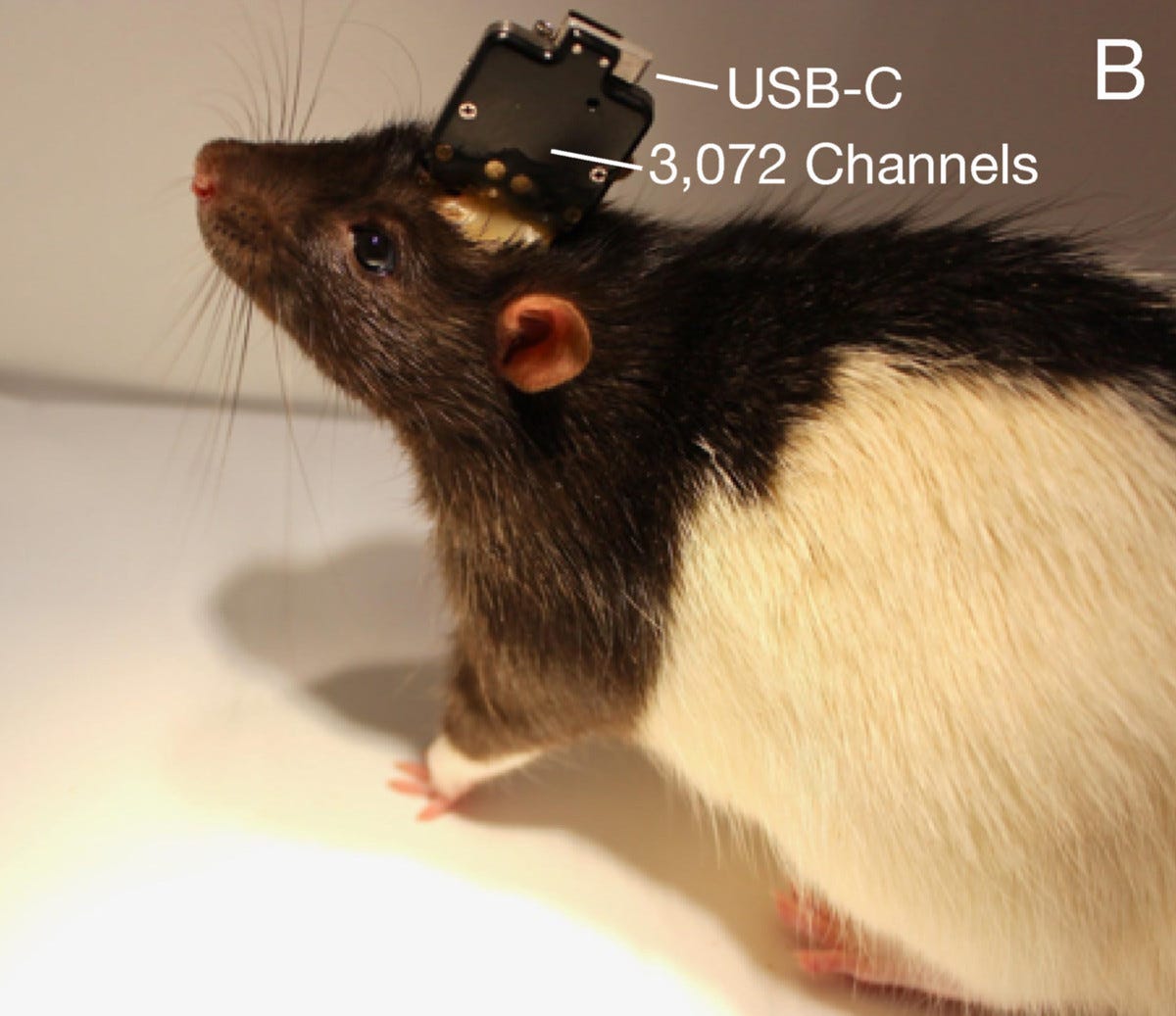Axial partners with great inventors creating unique business models. Profiling exciting life sciences companies at the earliest stages is important. Rather than talk about their work specifically conveying the opportunity set is more important where the company and others in the field will bring to market currently confidential inventions to more people.
Neuroprosthetics
Neuroprostheses alter neural activity to read and write information to the brain. Exciting businesses developing products to bring this modality to patients and consumers are Paradromics, Kernel, and Neuralink. There are other interesting companies working toward non-invasive methods such as Openwater, Neurable, BrainCo, and CTRL-Labs. With companies from Facebook to Medtronic, Cortera, Iota Biosciences, NeuroPace, and Boston Scientific working on the problem. With the top labs: Maharbiz Lab, Carmena Lab, Nicolelis Lab, Schwartz Lab, Stanford Neural Prosthetics Translational Laboratory, BrainGate, de Sa Lab, and the Andersen Lab. The two major levers for all these companies to build effective and safe devices are data rate and invasiveness. Ideally, a neuroprosthetic would have a high-bandwidth while being non-invasive and untethered. Older technology was often implanted but had low bandwidth. Non-invasive tools are interesting but scaling up their bandwidth is pretty difficult. So currently, there is a new crop of invasive devices claiming to have high data rates but they are currently very secretive about their results. As a result, bandwidth and modality type combinations can being designed to have certain advantages for particular use cases and indications. This gets to the important point for companies in this field; the ability to create a high-bandwidth neuroprostheses only matters if the increase in channels can drive impact on disease or enhancement. But solely increasing the number of channels (i.e. ability to measure more neurons) in a device does not directly lead to business success. Understanding what measurements to make and how to connect them to physiology is important to create a unique business model. Overall, these two levers determine the resolution across time and space a device can measure:
Source: Neurotech
Non-invasive (electroencephalogram; EEG):
Source: Imec
Somewhat invasive (electrocorticography; ECoG):
Source: Neurotech
Invasive (Utah Array; consisting of around a hundred sharp, silicon needles delivered into the brain with an air gun. The device can measure neurons in real-time with a high resolution but damage brain tissue, which induces an immune system inhibiting the device’s function overtime. Usually, the lifetime of the array is 2-5 years.):
Source: Utah
Neuroprosthetics emerged nearly 50 years ago. The terminology in the field is a little complex with terms like brain-computer interfaces (BCI), brain-machine interfaces (BMI), and more. This overview will focus on neuroprosthetics because they’re the most useful term that describes a commercially relevant product. The field was formed on top of Hans Berger’s work using EEG to measure neuron activity and discovering actionable potentials (image below). DARPA began funding research in the 1970s to use EEG to enable brain-to-brain communication; with UCLA in 1977 showingaugmenting action potentials can be used to control a cursor. This led Jacques Vidalto coin the term BCI. Since this pioneering work, the field has steadily made progress of the last few decades:
1998 - first, invasive and non-EEG, implant in the human brain that produces high quality signals measuring action potentials
1999 - a BCI used to help a quadriplegic individuals for limited hand movement
2002 - monkeys trained to control a cursor
2003 - the first BCI demonstrated in public (BrainGate)
2005 - money controls a robotic arm
2013 - neural dust invented; relying on ultrasound instead of electro-magnetic waves
2014 - direct brain-to-brain communication achieved via EEG
2019 - proposal for neural threading
The core idea of these tools is to use electrical stimuli to stimulate neural structures, muscles, or receptors to support or augment them. As key principles of the brain were discovered, advances in electronics and software enabled new systems that could be implanted into the brain or near it to treat neurological disease. Examples of useful neuroprosthetics are:
Cochlear implants that restore hearing in deaf people
Deep-brain stimulation alleviating Parkinson disease symptoms
Spinal cord neuromodulation attenuating chronic neuropathic disease
Helping paralyzed individuals to operate multiarticulated prosthetic arms using only brain activity; this use case is mainly confined to the research lab
Overall, the human brain is divided into two main sections:
Limbic - primitive part of the brain
Neocortex - top bit of the brain responsible for advanced computation (with most of it in the top 2 mm layer of the neocortex)
Tools like functional magnetic resonance imagery (fMRI) and more recently, optogenetics have provided insights into the brain by studying its real-time activity (i.e. blood flow, action potential). The human brain effectively evolved through a series of layerings. The neocortex is the brain’s latest addition with its originsfrom the Carboniferous Periodfirst appearing as a uniform, six-layered sheet of radially-oriented neurons in small mammals. As selective pressure acted, the human-form cerebral cortex emerged ~25M years ago once the human line separated from the primate line. Since the advent of molecular biology, rules of the brain have been established with the most important likely Hebb’stheory(i.e. neurons that fire together, wire together) of cell assemblies and synaptic plasticity (physical changes to the underlying anatomy of neurons). The evolutionary/development (evodevo) understanding of the brain combined with increasingly powerful investigation of it has uncovered the structure and function of the brain:
Source: Neuroprosthetics
Source: MedBullets
Over the last few decades there has been tremendous progress made in the field of neuroprosthetics; however, the best case studies of them are more often found in science fiction:
Ghost in the Shell - features hackers manipulating neural implants. One example is the use of hacking to interfere with the reports of eyewitnesses.
The Diamond Age - refers to corporations hacking neural implants in order to superimpose advertisements onto a user’s field of vision
There are still outstanding questions around long-term safety of neuroprosthetics and the useful resolution they can measure at. For the former, most animal studies in the field have the caveat of using high doses of antibiotics. The latter, having enough coverage of the brain and the bandwidth to transmit the information is still limited - wires at about 20 microns are off-the-shelf and anything thinner is bespoke and could form a competitive advantage for a company. The most useful framework to appreciate the difficulties of a successful neuroprosthetic is throwing an electronic into the ocean (Source: Maharbiz) and ensuring its durability and accuracy. Similarly, a neuroprosthetic is put into the brain (a bag of salt with proteins and other molecules) and expecting a ~20 year lifetime is still incredibly difficult due to:
Damaging vasculature
Systemic immune response
Device power and activity
As a result, non-invasive products from companies such as CTRL-Labs will probably get to patients sooner and hopefully have an impact on disease. As a result, successful products will not pursue problems with an origination problem where the physics or biology is limiting and engineering alone can create the solution. This is a spot where non-invasive recording exists. Companies focused on more invasive methods are dealing with some pretty difficult technical problems, but excitedly are being solved with new tools:
Electrodes without gliosis problems and brain inflammation
Self-assembly of sensors through the blood that can cross the blood-brain barrier
An injectable neural mesh where a rolled-up polymer net is injected through a millimeters-thin needle, which then spreads out when inside the cranial cavity covering the cortex with tiny electrodes
Product that integrates a neuroprosthetic with an exoskeleton
The PCR equivalent for neuroscience to enable high-resolution brain mapping
Making progress around devices and delivery is important; however, mapping out the brain circuitry will enable entirely new use cases. Just as the discovery of action potentials enabled BCIs, mapping out the brain will enable breakthrough neuroprosthetics.
Electron microscopy for circuit mapping got its start decades ago and accelerated in 2008/2009, and only now are organizations like Janelia doing large scale projects (i.e. for fly brain; 100K neurons) at a high enough resolution. Over the last decades, algorithms have caught up to electron microscopy data sets to improve circuit mapping in models. However, for long range pathways, there is a need for technology at a larger scale - barcodingof neurons is probably the best vehicle. Labs like the Deisseroth Laband Boyden Labare working on the problem to build the toolkit to understand the basic components of the brain. With Boyden, his lab uses expansion microscopyof barcodes forming the basis of Expansion Technologies, and Circuit Therapeuticsout of the Deisseroth Lab. With Boyden also involved with iXbio. Moreover, his lab is doing long-term toxicity studies in primates to figure out if rhodopsin proteins (important for optogenetics) have any effects to bring this toolkit closer to market. An outstanding project worth pursuing is a large scale circuit map with these barcodes. IARPA is funding MapNeuro and several labs out of Harvard and MIT with David Markowitz at IARPA working on generating interest for brain mapping for AI uses. The Mayberg Lab is also trying to get millimeter resolution for a depression study. The Allen Institute is doing their own mapping efforts along with Janelia Farm, but they are more conservative on technology using electron microscopes. These efforts are important to map out large-scale pathways in the brain and have a cell-type specific understanding of disease in the brain and potentially move toward enhancement of intelligence.
In order for neuroprosthetics to be useful, understanding what indications are tractable (highly correlated with brain mapping) is incredibly important. For deep brain stimulation, more targets are needed. A business model specific for paralyzed patients has to emerge. A useful example for new businesses is Medtronic buying a company called Sapiens(enabling device expansion from 8 channels to 64 channels). However, the company internally killed the project as they did not see the market timing signal to push it through regulatory approval. Understanding how brain circuits work together will enable valuable products to emerge and make the go-to-market more likely as opposed to the Medtronic/Sapiens example. In the short-term, medical applications for imaging and sensing through the entire skull might be interesting, which could rely on a hybrid of optics and ultrasound. For neuroprosthetics, the business models rely on the indications and the capability of the technology to actually treat them. Importantly, a moat for these companies will be the longevity in the market - there really is not a patent cliff for generic medical devices due to low time pressure and design difficulties.
As most invasive neuroprosthetic companies are extremely secretive, the recent Neuralink presentation is exciting and bringing more attention and capital to the field. Their method relies on using a neural sewing machine to inject flexible electrodes into an animal model to record large numbers of neurons in parallel. The company presented the ability to embed their system in a rat model. Unexpectedly, the company reported their first device will have over 1000 channels that will connect wirelessly to its power source and to a mobile device through Bluetooth. The device will detect the action potentials of the neurons, generating 100s of Mb per second, and convert the signals into a digital format on chip to reduce latency and increase response rates. There are still outstanding questions about long-term durability and safety where Neuralink is taking the position that robotic insertion will minimize vasculature disruption. Ultimately, the perfect neuroprosthetic is unlikely to be designed in the next 5 years; as a result, Neuralink and every company in the field will need to be rigorous around matching valuable indications to the capabilities of their devices.
Neuralink’s sewing machine to insert neural threads:
Source: Neuralink
Neuralink’s amplifier chip:
Source: Neuralink
Chip inserted into a mouse brain:
Source: Neuralink
Have a nice day.









